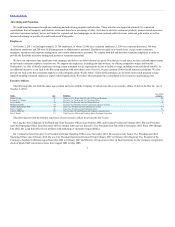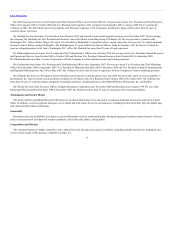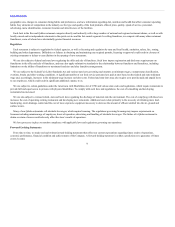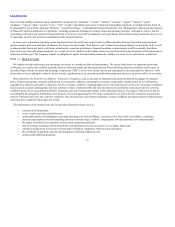Jack In The Box 2011 Annual Report Download - page 18
Download and view the complete annual report
Please find page 18 of the 2011 Jack In The Box annual report below. You can navigate through the pages in the report by either clicking on the pages listed below, or by using the keyword search tool below to find specific information within the annual report.
Table of Contents
ITEM 1B. UNRESOLVED STAFF COMMENTS
None.
ITEM 2. PROPERTIES
The following table sets forth information regarding our Jack in the Box and Qdoba restaurant properties as of October 2, 2011:
Company-owned restaurant buildings:
On company-owned land 58 173 231
On leased land 196 447 643
Subtotal 254 620 874
Company-leased restaurant buildings on leased land 620 808 1,428
Franchise directly-owned or directly-leased restaurant buildings - 502 502
Total restaurant buildings 874 1,930 2,804
Our restaurant leases generally provide for fixed rental payments (with cost-of-living index adjustments) plus real estate taxes, insurance and other expenses.
In addition, approximately 15% of the leases provide for contingent rental payments between 1% and 15% of the restaurant’s gross sales once certain
thresholds are met. We have generally been able to renew our restaurant leases as they expire at then-current market rates. The remaining terms of ground leases
range from approximately one year to 57 years, including optional renewal periods. The remaining lease terms of our other leases range from approximately one
year to 46 years, including optional renewal periods. At October 2, 2011, our restaurant leases had initial terms expiring as follows:
2012 – 2016 157 485
2017 – 2021 210 583
2022 – 2026 169 241
2027 and later 107 119
Our principal executive offices are located in San Diego, California in an owned facility of approximately 150,000 square feet. We also own our 70,000
square foot Innovation Center and approximately four acres of undeveloped land directly adjacent to it. Qdoba’s corporate support center is located in a leased
facility in Wheat Ridge, Colorado. We also lease seven distribution centers, with remaining terms ranging from six to 14 years, including optional renewal
periods.
ITEM 3. LEGAL PROCEEDINGS
The Company is subject to normal and routine litigation brought by former, current or prospective employees, customers, franchisees, vendors,
landlords, shareholders or others. The Company assesses contingencies to determine the degree of probability and range of possible loss for potential accrual
in its financial statements. An estimated loss contingency is accrued in the financial statements if it is probable that a liability has been incurred and the
amount of the loss can be reasonably estimated. Because litigation is inherently unpredictable and unfavorable resolutions could occur, assessing
contingencies is highly subjective and requires judgments about future events. The Company regularly reviews contingencies to determine the adequacy of the
accruals and related disclosures. The amount of ultimate loss may differ from these estimates. Although the Company currently believes that the ultimate
outcome of these matters will not have a material adverse effect on the results of operations, liquidity or financial position of the Company, it is possible that
the results of operations, liquidity, or financial position of the Company could be materially affected in any particular future reporting period by the
unfavorable resolution of one or more of these matters or contingencies.
17
























